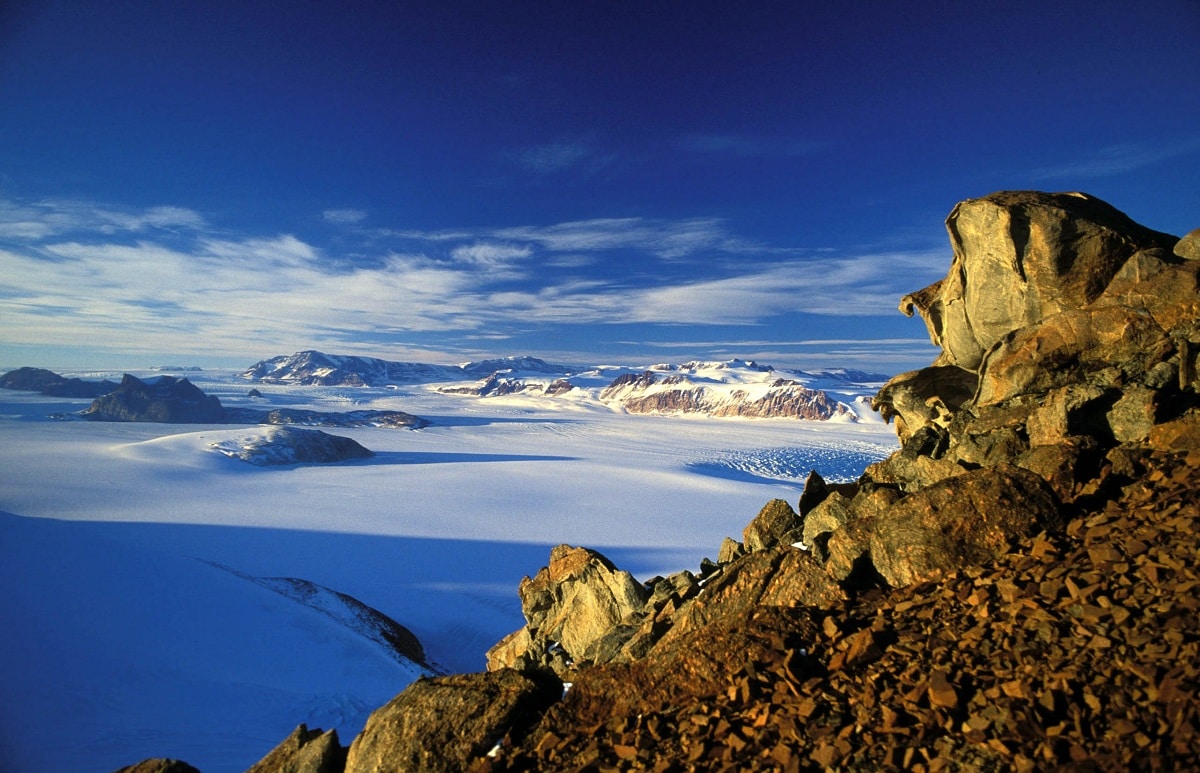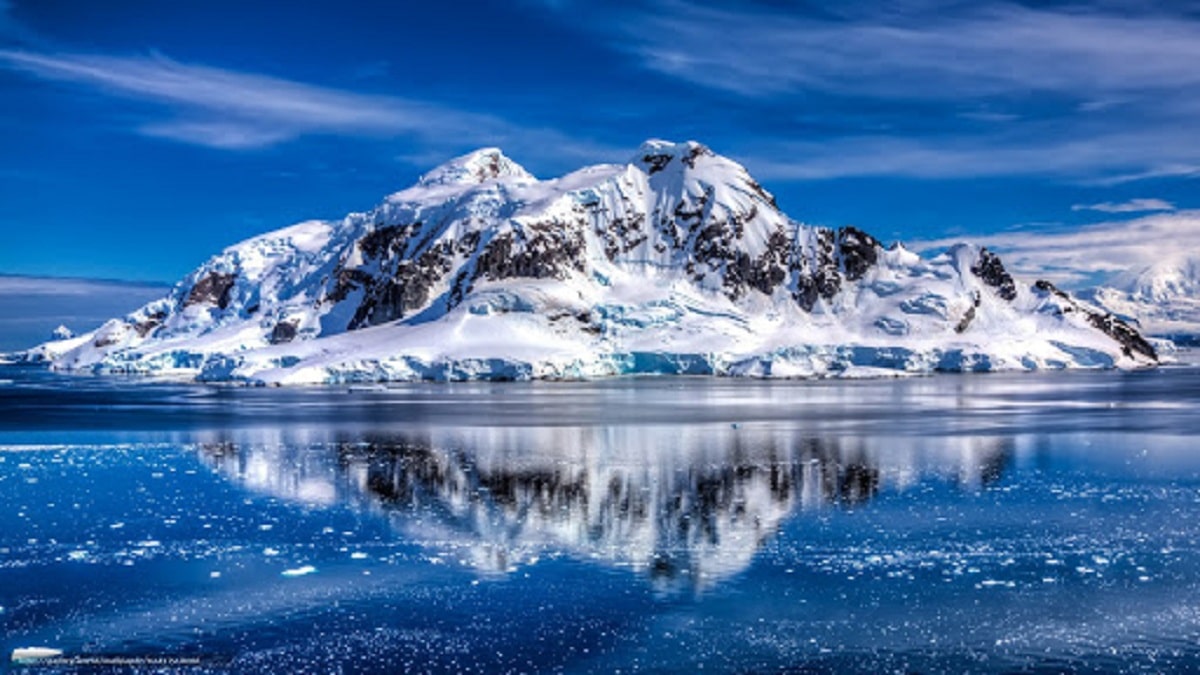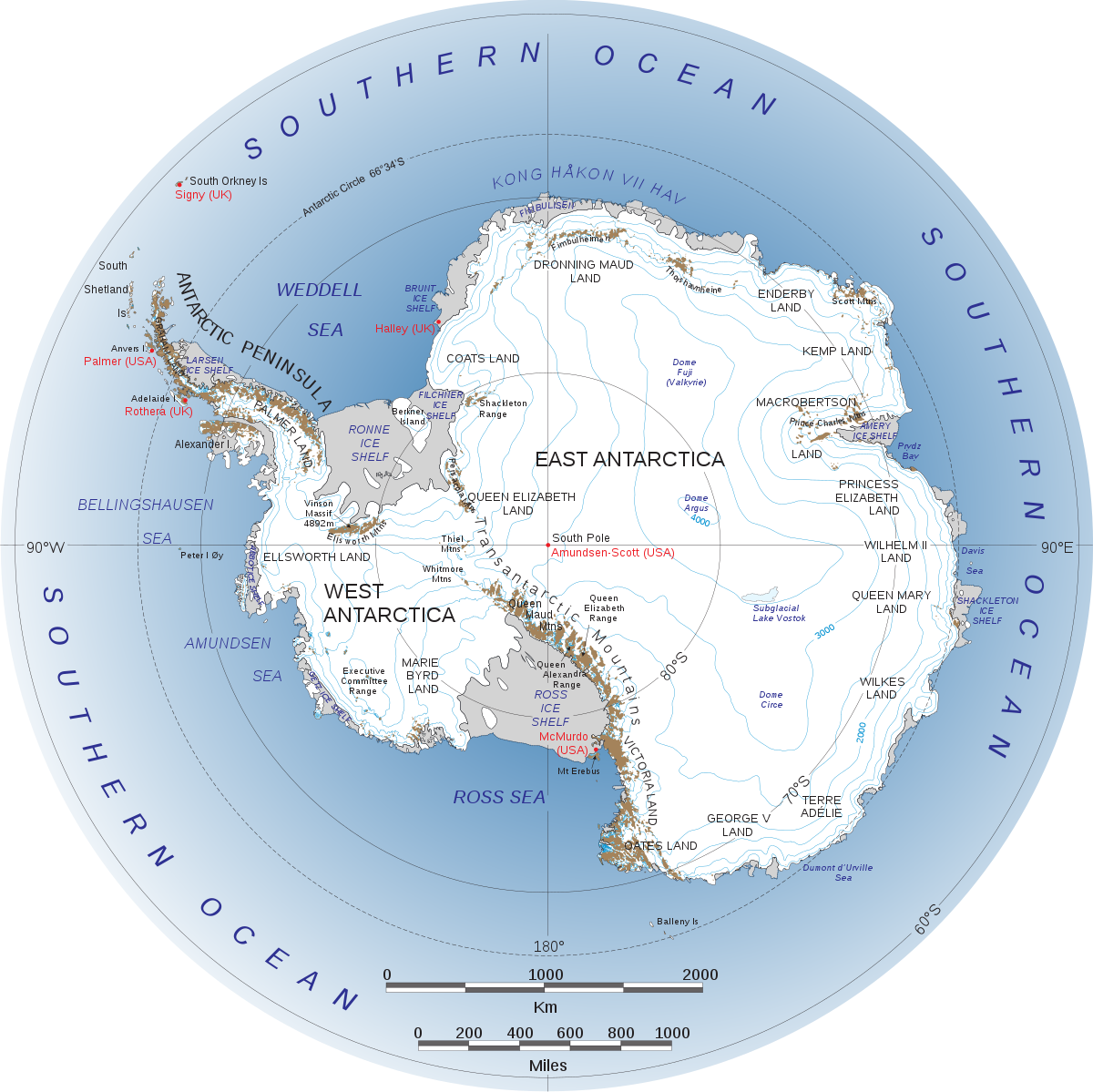
Unlike the North Pole, Antarctica is a rocky continent covered in huge glaciers. Here are the Transantarctic mountains and they are quite well known. It is a unique natural formation that cuts through the continent of Antarctica and divides it into several uneven parts. It is characterized by having numerous rocky peaks and valleys and is very rich for fossil exhibits. Thanks to these mountains it has been possible to expand a lot of knowledge in fields such as paleontology.
Therefore, we are going to dedicate this article to tell you all the characteristics and importance of the Transantarctic mountains.
Key features

Since the fossil richness of these mountains is quite high, it is known by many researchers as a dinosaur museum. The Transantarctic Mountains were first characterized on the map by the expedition of a British explorer known by the name of James Ross in the year 1841. However, due to the limited technology at that time to be able to survive in these harsh environments, there were some problems to reach the foot of the local peaks.
Later in 1908 several researchers made an expedition to cross the mountain range during a long journey. These travelers were Scott, Shackleton, and Amundsen. Thanks to this expedition, a more careful study of the Transantarctic mountains could be produced. Still later in the year 1947, a special expedition called the high jump was organized and they were able to produce enough detailed maps of the region with all the data obtained. In order to obtain all this information on the morphology of the mountains, various analyzes of the terrain were carried out in airplanes.
The Transantarctic Mountains are a system of mountain ridges formed from rocks. They stretch for several thousand kilometers from the Weddell Sea to the land of Coats. It is currently considered the longest mountain range in the world. Although in a popular way Antarctica is an icy continent, something totally true, there is rock under the layer of snow. At the north pole there is no rock formation, so the melting of the polar ice caps would produce a complete ocean. In the case of the melting of the polar ice caps of Antarctica, it would generate a rise in sea level, since all that water is not occupying a space in the ocean.
Geographers regard the ridge as a conventional line separating east and west Antarctica at a distance of 480 kilometers from all the rocks of the south pole.
Geology of the Transantarctic Mountains
Thanks to the numerous studies and information that the Transantarctic mountains have provided, it has become a reference for the study of fossils. Branch of science known as paleontology has been nourished by a great deal of information thanks to the Transantarctic mountains. In the geological sense, these mountains were identified as an important outlet of the earth's crust on the surface.
The origin dates back to an active seismic activity for about 65 million years. Other ranges that lie within the limits of Antarctica are of much more recent origin. The highest point of the Transantarctic mountains reach a height of 4.528 meters above sea level. This is where the highest concentration of fossils on the planet are found. Tens of millions of years it has been possible to maintain this amount of fossils in a climate in optimal conditions for their conservation.
Although in times past Antarctica was rich in life, today it is covered by ice. Tens of millions of years ago there was a climate in optimal conditions for the development of living organisms, which explains the high concentration of fossil remains present in these mountains.
Interesting facts about the Transantarctic mountains

We are going to see what are the main data of interest that have been extracted from the different studies of the Transantarctic mountains. In the middle of the last century, the separation of the largest iceberg ever recorded by researchers could be seen. And it is that global average temperatures are rising since the industrial revolution of human beings. The surface of this glacier is 31.080 kilometers, whatever is on the territory of some European countries.
In particular, it is considered one of the driest places on the planet where there has been no rainfall for more than two million years. In the Sierra Vista part of the Transantarctic Mountains is called Taylor Valley. Here is a waterfall where the streams flow downward and turn into a color with shades of blood red. Some researchers explain this phenomenon and it is due to the saturation of the water produced by anaerobic bacteria. Anaerobic bacteria are those that live in the absence of oxygen and do not need to live.
In formation of the part of the highest peak of the Kirk-Patrick ridge, remains of a winged dinosaur were found. As we have mentioned before, tens of millions of years ago, Antarctica was a place totally inhabited by different species of dinosaurs. The dimensions of these large fossil crows are unmatched. It has also been possible to extract fossils of small carnivorous dinosaurs such as Cryolophosaurus.
One of the most extreme points on the crest of the Transantarctic Mountains is Cape Adair. Due to the extremely low temperatures that occur throughout the region, the fossils have been preserved in very good condition. These conditions are perfect for humanity to continue advancing in the study of the origin and evolution of living organisms to the present day.
Conclusions
The Transantarctic Mountains remain one of the least explored places in the world today. Keep in mind that it is a natural formation with great distance from any type of civilization and where there are very difficult climatic conditions to survive. At the same time, the ridge is a fantastic beauty reminiscent of landscapes from other planets.
I hope that with this information you can learn more about the Transantarctic mountains and their characteristics.
